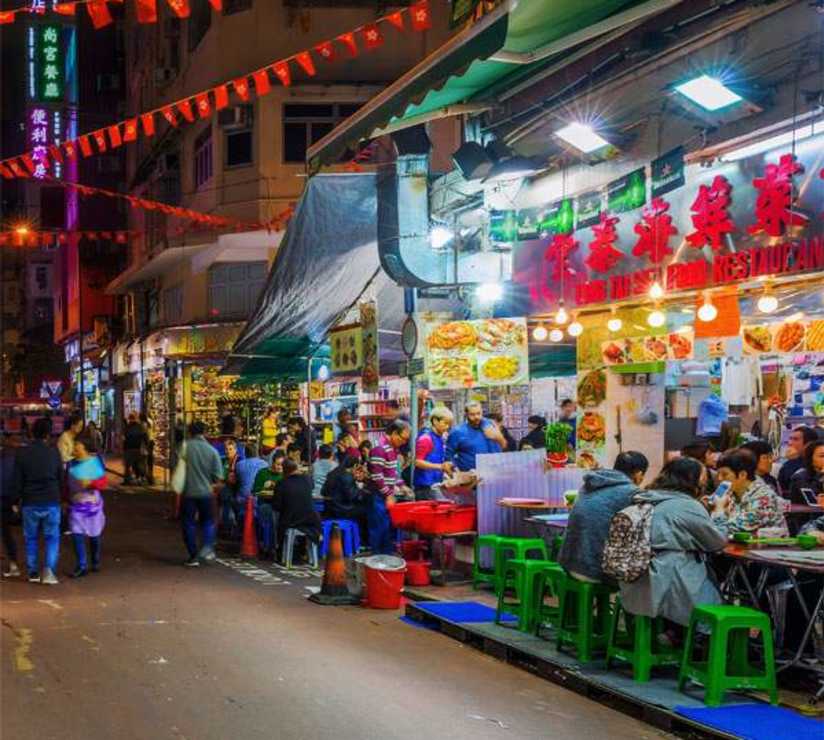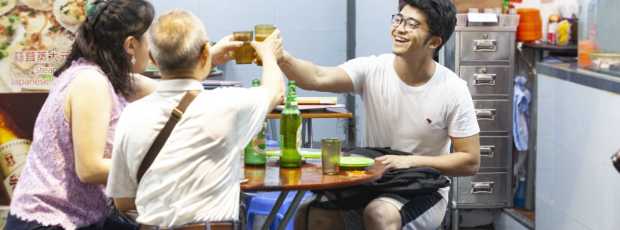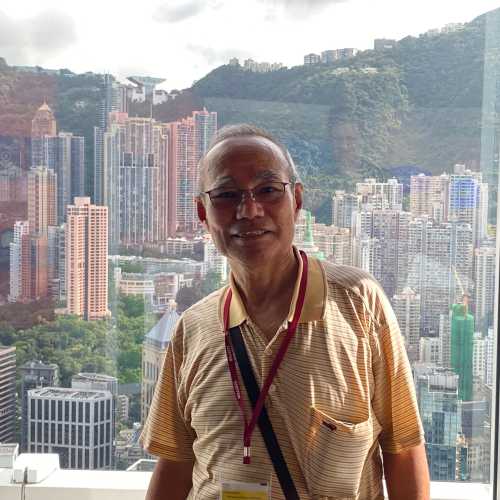Table Of Contents
- Day 1: The Soul of Hong Kong Island
- Day 2: Kowloon's Authentic Character
- Making the Most of Your Short Trip
- Why This Itinerary Works
Two days feel like a blink when you first arrive in Hong Kong, but this city has a way of unfolding itself completely if you know where to look. I've watched countless visitors try to cram every major sight into their itinerary, rushing from one landmark to another, missing the subtle rhythms that make Hong Kong extraordinary.
The truth about spending 2 days in Hong Kong is that it's not about seeing everything. It's about feeling the city's pulse. When you Hong Kong explore with curiosity instead of a checklist, you'll find the real magic. From the early morning bustle in Central to the late-night opera singers at Temple Street Night Market, every moment carries the weight of this city's layered history.
Hong Kong isn't just a destination you visit. It's a place that wraps itself around you. The scent of fish balls wafts from street stalls. The gentle sway of ferries crossing the harbor. The quiet contemplation you'll find tucked away in places like Nan Lian Garden. These moments string together to create something that feels both ancient and impossibly modern.
Day 1: The Soul of Hong Kong Island
Your first morning should begin where this city's story truly starts, at the harbor. There's something magical about watching Hong Kong wake up from the water, and the best way to witness it is aboard the Star Ferry. This isn't just transportation. It's a ritual that connects you to generations of residents who've made this same journey.
Morning: Conquering the Peak
Victoria Peak calls to every visitor, and for good reason. The peak offers the kind of Hong Kong skyline views that make you understand why people fall in love with this place at first sight. Take the tram up. It's been carrying passengers since 1888, and the steep ascent feels like traveling through time to the city's highest point.
Here's what most guides won't tell you. The real magic happens at Peak Galleria rather than the crowded Peak Tower. The views are just as breathtaking, but you'll have space to breathe and truly absorb what you're seeing across the entire Hong Kong Island. From this vantage point, Hong Kong Island spreads out below like a living map. On a clear day, you can see all the way to Macau and observe the ferries crossing Victoria Harbour like toys in a bathtub.
The Peak Lookout restaurant sits partway down the mountain, offering both incredible food and that perfect backdrop. But if you're watching your budget, the viewing areas at the galleria provide the same vistas without the price tag.
Afternoon: Central District and Sheung Wan's Hidden Corners
The Central District below pulses with energy that's entirely unique. Unlike other financial centers that feel sterile, Central maintains this wonderful collision between old and new. Walk through the elevated walkways and you'll pass gleaming skyscrapers built alongside traditional markets that have been feeding office workers for decades.
The Mid-Levels Escalator cuts through this area like a spine, connecting the business district to the residential areas above. Riding it gives you a glimpse into how residents actually live. You'll pass apartment windows, small temples, and the kind of local restaurants where you'll find the best wonton noodles in the city.
Afternoon: Authentic Flavors
For lunch, skip the tourist traps and follow the locals. Tim Ho Wan's original Mong Kok branch earned a Michelin star in 2010 before moving to Olympian City, while the Sham Shui Po location briefly received a Michelin star in 2017 but currently holds the Bib Gourmand. But you'll find equally delicious food at places that don't make international headlines. Look for the steam rising from bamboo baskets. That’s your signal that you’ve found something special.
The egg tart shops in Central vary surprisingly from bakery to bakery. Some use puff pastry, others shortcrust, and the custard ranges from silky smooth to slightly caramelized. Try three different bakeries and you'll taste the evolution of this classic.
Evening: Temple Street Night Market's Living Theater
As darkness falls, the city transforms completely. The Temple Street Night Market comes alive with energy that feels almost electric. This isn't just about shopping. Though you'll find everything from jade jewelry to vintage cameras. It's about immersing yourself in a tradition that connects modern Hong Kong to its roots as a trading port.
The fortune tellers set up their tables as the sun sets, reading palms and faces under the glow of neon signs. Opera singers perform traditional Cantonese opera, their voices carrying over the sounds of sizzling street food and bargaining customers. This is where you'll understand why the culinary culture runs so deep.
Day 2: Kowloon's Authentic Character
Your second day takes you across the harbor to Kowloon, where the city's character shifts completely. Kowloon feels more grounded, more residential, with neighborhoods that have maintained their distinct personalities despite rapid development.
Morning: Tsim Sha Tsui and Waterfront Revelations
Start your day at the Tsim Sha Tsui Promenade, where you can look back at Hong Kong Island from across Victoria Harbour. The perspective is completely different from here. The skyline feels more approachable, more human in scale. From Kowloon, you can see how Hong Kong Island rises dramatically from the water, its towers creating a wall of glass and steel that somehow still feels welcoming. The promenade fills with locals doing their morning exercises, and you'll see how residents incorporate green spaces into their daily routines.
The Star Ferry terminal here connects you back to Central. But before you think about another crossing, spend time walking through Tsim Sha Tsui itself. The density of this area is remarkable. Museums, hotels, restaurants, and shopping centers are all compressed into blocks that you can walk in minutes.
The Hong Kong Museum sits quietly among the bustle, offering context for everything you're experiencing. The exhibits help you understand how this fishing village became a global city, and why the traditions you're witnessing have survived such dramatic change.
Late Morning: Sham Shui Po's Unvarnished Reality
Sham Shui Po represents the side that most visitors never see. This working-class neighborhood hasn't been polished for tourists, which makes it incredibly valuable for understanding how real residents live and work. The markets here sell everything imaginable: electronics, fabrics, toys, and household goods. But it's not just about commerce.
Sham Shui Po has maintained community bonds that rapid development has strained elsewhere. You'll see neighbors greeting each other, children playing in small parks, and the kind of street life that feels organic rather than performed. The food stalls here serve some of the city's most authentic flavors, prepared for local workers rather than tourists.
Afternoon: Markets and Authentic Shopping
The Ladies Market in Mongkok offers a different market experience. It's more tourist-friendly but still authentically local. The vendors here have perfected their craft over decades, and watching them work is like witnessing performance art that combines salesmanship, humor, and genuine pride in their products.
Causeway Bay provides a stark contrast to the street markets, with its gleaming shopping centers and department stores. But even here, you'll find pockets of old Hong Kong. Tea shops that have been serving the same blends for fifty years. Small restaurants tucked into building corners where office workers grab quick meals.
Late Afternoon: Nan Lian Garden's Peaceful Refuge
After the intensity of the markets, Nan Lian Garden provides the perfect counterpoint. This classical Chinese garden feels like stepping into a different century, with its lotus ponds, wooden bridges, and carefully arranged rocks creating spaces for contemplation and fresh air.
The garden connects to Chi Lin Nunnery, where Buddhist nuns maintain traditions that stretch back centuries. The wooden architecture was built without using a single nail, following Tang Dynasty construction methods. The quiet here feels profound after the constant hum of city streets.
These green spaces remind you that Hong Kong has always been more than just commerce and development. The city has preserved places for reflection, for connecting with nature, for maintaining spiritual practices that provide balance against the relentless pace of modern life. Hong Kong Park on Hong Kong Island offers similar tranquility, but Nan Lian Garden feels more removed from the urban intensity that defines much of the island's character.
Evening: Harbor's Liquid Stage
As your second day winds down, take the Star Ferry back across Victoria Harbour one more time. The crossing at sunset offers views that change by the minute as the light shifts and the city begins to illuminate itself with those famous dazzling lights.
From the water, you can see both sides. The gleaming towers of Hong Kong Island and the dense neighborhoods of Kowloon. The harbor created this city and still connects its parts, and the ferry ride gives you time to process everything you've experienced during your time here. The contrast between Hong Kong Island's vertical ambition and Kowloon's horizontal sprawl becomes clear from this floating perspective.
If you have energy left, Lan Kwai Fong awaits with its nightlife scene. But honestly, after two full days exploring, you might prefer to find a quiet spot with harbor views and simply watch the city continue its endless dance of tradition and change.
Looking for a private city experience in Hong Kong?
Explore the city with a local who plans a private day just for you; no groups, no scripts.
Making the Most of Your Short Trip
Transportation That Actually Works
The Octopus card is your key to incredibly efficient public transportation. Buses, trains, ferries, and even many shops accept this single card, making navigation seamless even if you don't speak Cantonese. The MTR connects every area you'll want to visit, but don't overlook buses and ferries. They often provide better views and give you a sense of how residents move through their city.
Food Adventures That Matter
Street food isn't just delicious. It's safe and integral to the city's character. The turnover is so high that everything stays fresh, and vendors take pride in their specialized dishes. Don't hesitate to eat from stalls that look busy with locals, especially in areas like Sham Shui Po or around the night market.
The best wonton noodles often come from the smallest shops, tucked into residential buildings throughout the city. Look for places where the noodles are made by hand and the wontons are plump with fresh shrimp. These aren't just meals. They're connections to culinary heritage.
Egg tart quality varies dramatically. The best versions achieve perfect balance between flaky pastry and silky custard, with just a hint of caramelization on top. Try them at different bakeries during your visit. You'll start to understand why locals have such strong opinions about where to find the perfect version.
Timing Your Experience
Hong Kong Park is most beautiful in the early morning when locals practice tai chi and the air provides relief from the city's density. The bird garden here offers unexpected tranquility, and a short walk through the park gives you perspective on how the city balances urban intensity with nature.
Visit different areas at different times to understand the rhythms. Central buzzes during lunch hours, the night market comes alive after dark, and the peak offers completely different experiences depending on whether you visit during the day or at night.
The dazzling lights of the harbor are best appreciated from multiple vantage points. Try the Tsim Sha Tsui Promenade for classic views, but also look for less crowded spots along the waterfront where you can watch the light shows without fighting crowds.
Beyond the Obvious
If you have time, consider a trip to Lantau Island. The Tian Tan Buddha and the fishing village of Tai O show you quieter sides, where traditional ways of life persist alongside modern development. The cable car ride to Ngong Ping offers views across the entire region.
Man Mo Temple on Hollywood Road provides a glimpse into spiritual life, with its massive hanging incense coils creating an atmosphere that feels both mysterious and deeply peaceful. The temple sits in the heart of Hong Kong Island but feels removed from the commercial bustle, offering a window into the traditional practices that persist alongside the island's modern development.
For first-time visitors, the Avenue of Stars along the waterfront offers a gentle introduction to the city's film heritage. The statues of Bruce Lee and Jackie Chan remind you that cultural influence extends far beyond borders, but the real value is the harbor views and the chance to watch locals enjoying their city.
Why This Itinerary Works
A short trip here can feel rushed, but two days provides the perfect introduction to this city's complexity. You have enough experience to understand the unique character without feeling overwhelmed by trying to see everything. The city rewards curiosity over completeness, and this timeframe gives you space to follow interesting streets, stop for amazing food, and absorb the energy that makes this place special.
The beauty lies in its layers. The way ancient traditions persist alongside cutting-edge modernity. How amazing dishes emerge from tiny stalls. How the city maintains its soul despite constant change. Two days lets you feel these layers rather than just checking items off a list.
Most visitors leave planning their return trip. The city reveals itself gradually, and even this brief time provides enough glimpses to understand why this place captures people's imagination so completely. Whether you spend your time exploring from the highest point, getting lost in the maze of markets, or simply riding ferries back and forth across the harbor, curiosity gets rewarded.
The experiences you'll have, whether it's watching opera singers perform under neon lights, tasting authentic dishes from street vendors, or feeling the city's energy from above, will compress into memories that feel much larger than the short trip that created them. That's what makes this place special, and why 2 days in Hong Kong can feel like a lifetime of experiences perfectly distilled into one remarkable journey.
If you’re staying longer, here’s how to make the most of a 3 days in Hong Kong.
What if your day in Hong Kong was planned by someone who knows it — and you?
City Unscripted matches you with a local host who creates a private experience based on your interests, not a set route.
Tip
We match you with the right host, not just any guide.Want to experience the real Hong Kong with someone who lives there?
A fully private experience, planned and led by a local host who tailors the day to you
Ready to plan your perfect day in Hong Kong?
Start your experienceWhat if your day in Hong Kong was planned by someone who knows it — and you?
City Unscripted matches you with a local host who creates a private experience based on your interests, not a set route.
Want to experience the real Hong Kong with someone who lives there?
A fully private experience, planned and led by a local host who tailors the day to you










